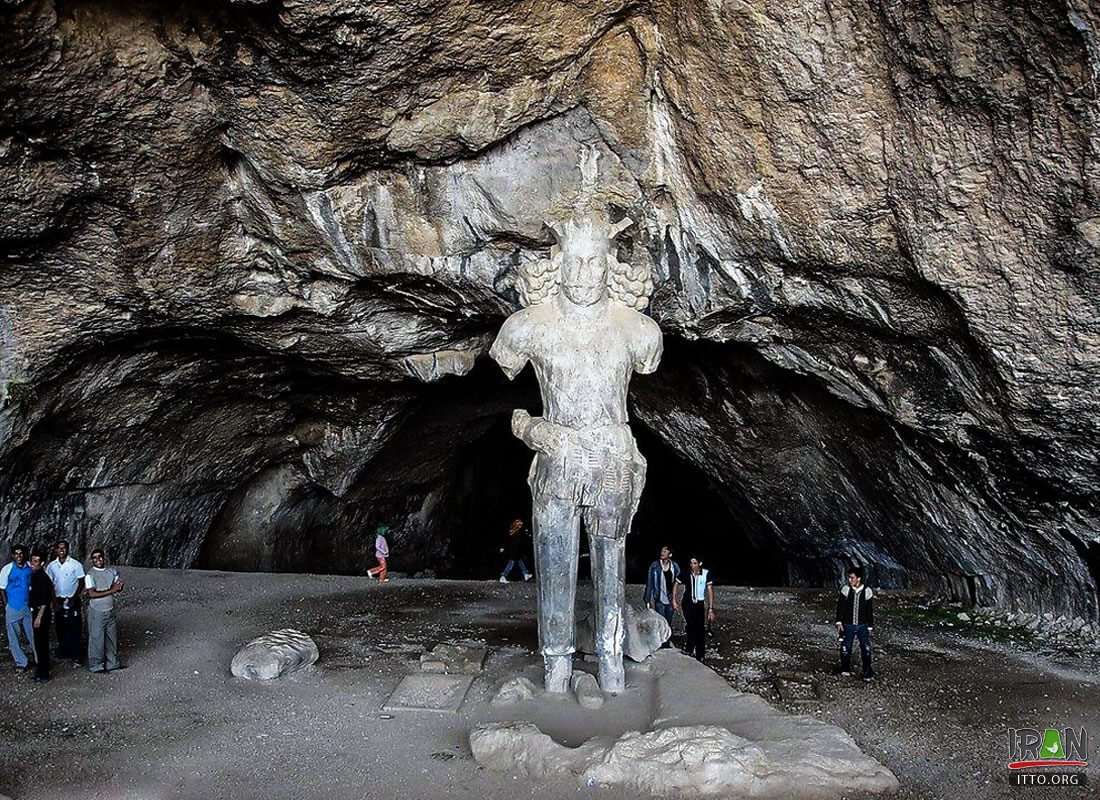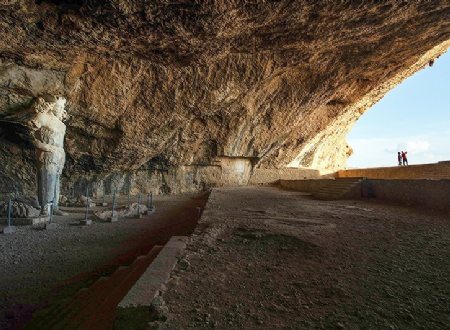In the Chowgan Valley (Chogan Valley near Kazerun in Fars Province) there is a rather large cave in which a huge statue of Shapour I (the second ruler of the Sasanid Empire) has been carved. The length of cave entrance is about 16 m, with a height of less than 8m. The height of statue is 7m high and its shoulders are 2m wide, and its hands are 3m long. It is said that in addition to this giant statue of Shapour I, the tomb of this great man is also situated in this cave most probably.
Like the representations of the king on the reliefs in the
Chogan valley (Chougan canyon), the king is shown with long hair, a crown, and all his weapons.
Behind the statue, in the depth of the cave, are three ancient water-basins. At both sides of the statue, the rock-walls of the cave were prepared for reliefs by leveling, but the reliefs were never made. It is said that in addition to this giant statue of Shapur I, the tomb of this great man is also situated somewhere in this cave. Another legend ( according to the local belief) indicates that Shapur, being defeated in a battle, ran into this cave and was lost ever since and his body/remains have never been recovered.

The statue is about 35 m from the cave entrance, on the fourth of five terraces, lying approximately 3.4 m below the level of the cave entrance. Its height of about 6.7 m and breadth across the shoulders of more than 2 m make it one of the most impressive sculptures from the Sassanian period.
About 1400 years ago, after the Arab invasion of Iran and collapse of the Sasanian Empire, the statue was pulled down and a part of one of its legs was broken. About 70 years ago, again, parts of his arms were also broken in an earthquake. The statue had been lying on the ground for about 14 centuries until 1957 when Mohammad Reza Shah Pahlavi, the last Shah of Iran, had a group of Iranian military to raise it again on its feet and repair the broken foot with iron and cement. The project of raising the statue, building the roads from Bishapur to the area and paths in the mountain, stairs and iron fences on the route to the cave took six months in 1957.
There are two stone inscription at the entrance of the cave, which one of them is the translation of Shapur’s inscription in the role of Rajab and the other is how the statue was restored after 1000 years in 1957 by the army. Both inscriptions were created by the army during the Pahlavi era.
Getting There:
The best way to go to the Bishapur Cave is to hire a guide at the entrance of the excavation of Bishapur City, and/or ask for a driver from the village in the valley. You will need at least two hours to drive to the village, climb the mountain, return, and drive back to the entrance of the excavation.


